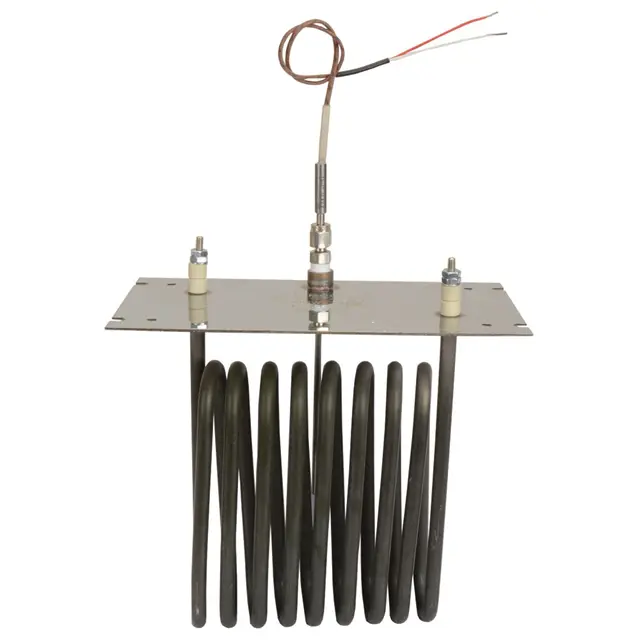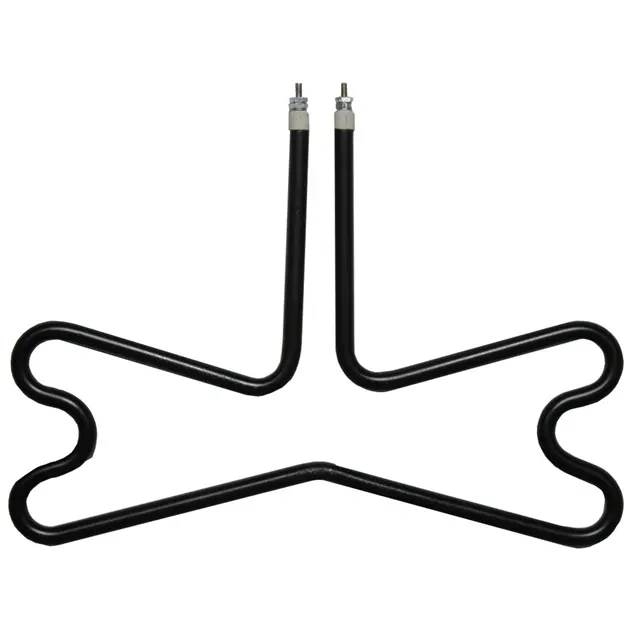
Tempco Tubular heaters, also known as sheathed elements or tubular elements, are extremely versatile. They are widely used in commercial, scientific and industrial heating solutions for a variety of applications. They consist of a metal sheath that encloses a resistance wire coil surrounded by compacted, insulating material. Magnesium oxide is most-commonly used as the insulating material because of its high thermal conductivity and low electrical conductivity. Tubular heaters can be bent into different shapes and sizes. Tempco offers multiple sheath materials to suit different heating mediums and environments. Tubular heating elements can also be fitted with various terminations and mounting options for easy installation and maintenance. Additionally, they can be designed with different electrical ratings, heater diameters and heater lengths.
Like any other heating solution, tubular heaters have benefits and limitations. Here is what you need to know when specifying tubular elements for your heating needs:
Benefits
 Efficient heat transfer: A high watt density and strong outer sheath allow for efficient heat transfer from the resistance coil to the heated medium, whether it is air, liquid or solid. They can also be configured to provide uniform heat distribution across the heated surface or volume.
Efficient heat transfer: A high watt density and strong outer sheath allow for efficient heat transfer from the resistance coil to the heated medium, whether it is air, liquid or solid. They can also be configured to provide uniform heat distribution across the heated surface or volume.- Durable and reliable: Tubular heaters have a robust construction that can endure physical stress, vibration, thermal-shock and corrosion. They also have a long service life and low maintenance requirements because they do not have moving parts or require frequent cleaning.
 Flexible and adaptable: These heating elements can be customized to fit almost any shape or size. They can also be made of different sheath materials such as steel, stainless steel, Incoloy® or Inconel® to withstand various chemicals, temperatures and pressures. Tubular heaters can also be used for conduction, convection or radiant heating depending on the placement and orientation of the heater.
Flexible and adaptable: These heating elements can be customized to fit almost any shape or size. They can also be made of different sheath materials such as steel, stainless steel, Incoloy® or Inconel® to withstand various chemicals, temperatures and pressures. Tubular heaters can also be used for conduction, convection or radiant heating depending on the placement and orientation of the heater.- Easy to install and control: Additional sheath options that allow for easy installation and removal include threaded fittings, flanges, brackets or clamps. They can also be connected to thermostats, controllers or sensors that regulate the temperature and power output of the heater.
- Third Party Certifications: Depending on heater specifications, tubular heaters may be eligible for agency approvals such as UL, CSA, CE, and/or UKCA certification to comply with safety and performance requirements.
 Limitations
Limitations
- Potential overheating: Tubular heaters must be carefully selected and controlled to avoid overheating. They can generate high temperatures that may exceed the safety limits of the heated medium or the surrounding environment. This may cause damage to the heater, the heated material or the equipment.
Many tubular products can be assembled with thermostats and/or thermocouples for temperature management to prevent overheating. - Limited bending radius: The minimum bending radius of a tubular heating element depends on the diameter and sheath material. This limit minimizes the risk of damage to the coil or the sheath. Exceeding the minimum bend radius may result in reduced performance or heater failure. Tubular heaters must be bent with care and precision to avoid excessive stress or strain.
Tempco Tempco-Pak cable heaters are a possible alternative for applications with very restrictive space requirements.
If tubular heating elements are suitable for your commercial, scientific or industrial application, there are many benefits. They are a great option for applications that require highly efficient, durable, flexible and easy-to-use heating solutions. Consult Tempco with your requirements and we will design and manufacture a custom heating solution for you.

 Efficient heat transfer: A high watt density and strong outer sheath allow for efficient heat transfer from the resistance coil to the heated medium, whether it is air, liquid or solid. They can also be configured to provide uniform heat distribution across the heated surface or volume.
Efficient heat transfer: A high watt density and strong outer sheath allow for efficient heat transfer from the resistance coil to the heated medium, whether it is air, liquid or solid. They can also be configured to provide uniform heat distribution across the heated surface or volume. Flexible and adaptable: These heating elements can be customized to fit almost any shape or size. They can also be made of different sheath materials such as steel, stainless steel, Incoloy® or Inconel® to withstand various chemicals, temperatures and pressures. Tubular heaters can also be used for conduction, convection or radiant heating depending on the placement and orientation of the heater.
Flexible and adaptable: These heating elements can be customized to fit almost any shape or size. They can also be made of different sheath materials such as steel, stainless steel, Incoloy® or Inconel® to withstand various chemicals, temperatures and pressures. Tubular heaters can also be used for conduction, convection or radiant heating depending on the placement and orientation of the heater. Limitations
Limitations